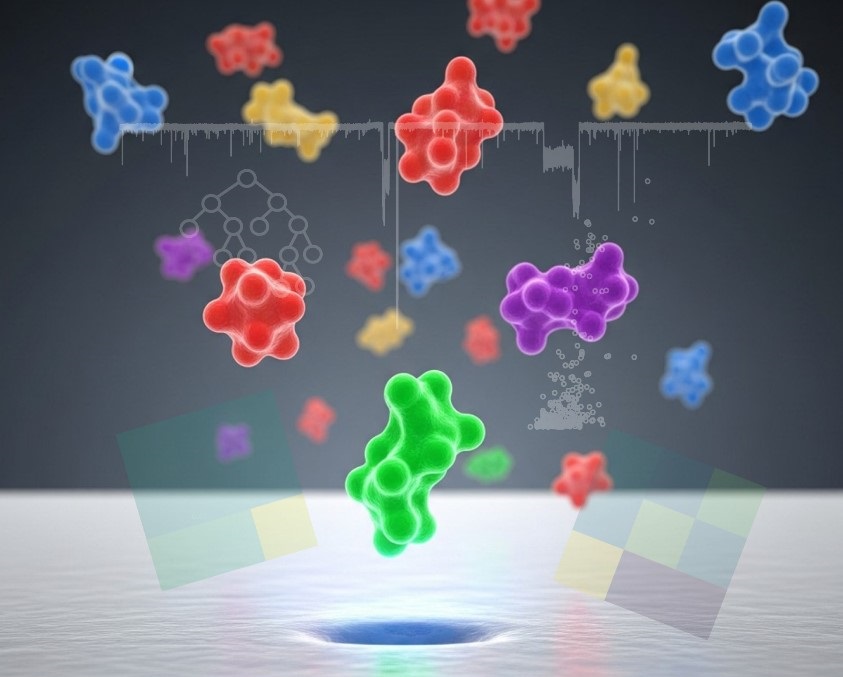
Understanding molecular diversity is a cornerstone of biomedical research and diagnostics, yet existing analytical tools often falter in distinguishing subtle variations among biomolecules, such as proteins. In a groundbreaking development, researchers at the University of Tokyo have unveiled a new analytical approach that promises to overcome these challenges. This innovative method, known as voltage-matrix nanopore profiling, integrates multivoltage solid-state nanopore recordings with machine learning to accurately classify proteins in complex mixtures based on their intrinsic electrical signatures.
The study, published in Chemical Science, demonstrates the potential of this framework to identify and classify “molecular individuality” without requiring labels or modifications. This advancement could pave the way for more sophisticated applications of molecular analysis across various fields, including disease diagnosis.
Revolutionizing Protein Analysis
Solid-state nanopores are minuscule tunnels through which proteins or other molecules can pass, driven by ionic currents. By applying voltage to this process, the signals generated as molecules traverse the nanopores can help identify them. While nanopore technologies have already transformed DNA and RNA analysis, their application to proteins has been limited due to the complex structures and variable signal behaviors of proteins. The new approach by the University of Tokyo team systematically varies voltage conditions, capturing both stable and voltage-dependent signal patterns. By organizing these features into a voltage matrix, a machine learning model can distinguish proteins even within mixtures, thus extending the utility of nanopore measurements beyond sequencing to general molecular profiling.
“Identifying and classifying proteins within complex biological mixtures is difficult. Traditional methods like enzyme-linked immunosorbent assay (ELISA) or mass spectrometry often struggle to resolve subtle structural differences or dynamic states, especially without labeling,” said Professor Sotaro Uemura from the Department of Biological Sciences at the University of Tokyo. “Solid-state nanopores provide a promising solution, but previous approaches were limited by their reliance on single-voltage measurements. Our work set out to overcome these limitations.”
Demonstrating Practical Applications
To illustrate the concept, the researchers analyzed mixtures containing two cancer-related protein biomarkers: carcinoembryonic antigen (CEA) and cancer antigen 15-3 (CA15-3). By constructing a voltage matrix from signals recorded under six different voltage conditions, they identified distinct response patterns characteristic of each protein. The approach also detected shifts in molecular populations when an aptamer, a short synthetic DNA segment, was bound to CEA.
Furthermore, the researchers tested the practicality of their approach by applying the voltage-matrix framework to mouse serum samples. By comparing sera that had undergone centrifugation with those that had not, and analyzing them under multiple voltage conditions, they found that the two types of samples could be clearly distinguished within the voltage matrix. This result indicates that the method can detect and classify subtle compositional differences in complex, biologically derived samples, supporting its potential applicability to real-world bioanalytical and diagnostic contexts.
Implications for Future Research
The implications of this research are far-reaching. By systematically varying voltage conditions and applying machine learning, the team has created a voltage matrix that reveals both robust, voltage-independent molecular features and voltage-sensitive structural changes. This novel approach not only improves detection sensitivity but also establishes a new way to represent and classify molecular signals across voltages, allowing researchers to visualize molecular individuality and estimate compositions within mixtures.
“Our study is not simply about improving detection sensitivity — it establishes a new way to represent and classify molecular signals across voltages, allowing us to visualize molecular individuality and estimate compositions within mixtures,” Uemura explained.
Looking Ahead
Looking to the future, the research team plans to extend their framework to human serum or saliva samples. They are also working on developing a parallelized nanopore system capable of carrying out multiple tasks simultaneously for real-time molecular profiling. This advancement could ultimately support applications ranging from biomedical diagnostics to monitoring environmental changes.
As the field of molecular analysis continues to evolve, the integration of nanopore technology with artificial intelligence represents a significant leap forward. The potential to enhance diagnostic precision and broaden the scope of molecular profiling could have profound implications for both research and clinical practices worldwide.







